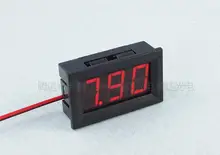Hi MJ,
As the other members have implied, what you want to do is dead simple from a circuit point of view.
But the practical implementation will be the challenge in view of the high currents and power that are involved.
The high currents will require substantial wiring, terminals, and switches (or relays).
The high power dissipation will require large heatsinks and possibly fans
The parts you will need are:
(1) Case
(2) Heatsinks (to cool the power resistors which bolt down)
(3) Fans
(4) Switch, rotary
(5) Relays (40 A, 12V coil automobile)
(6) Voltmeter, moving coil
(7) Ammeter moving coil
(8) High power resistors (bolt down)
(9) Power supply connector harness (two off)
(10) 12V Power Supply Test Set (PSTS) power supply
With the exception of the case (1) and heatsinks (2), all the items are available at a relatively low cost from the net. But the case and heatsinks, although available, will be relatively expensive. On the other hand, if you repurposed a case from another piece of equipment and, with a bit of mechanical ingenuity, you could assemble the hardware at little cost.
Moving coil meters are nice- I like them, but from a technical point of view, and probably cost point of view, digital meters would be superior. Digital meters would also be easier to read.
I would suggest that relays will be required rather than direct switching of the load resistors.
A bit of extra electronics will be required to provide an 'On' signal to turn the computer power supplies on- you should really test that function on the computer power supplies.
Some computer power supplies need a minimum current drain to function, so that will need to be taken into account.
If you would like my advice, forget about the electronics, one/some of us should be able to sort that, and think about the case, heatsinks, mounting of resistors, fans, switches, relays, and meters. You will probably find that the case and heatsinks will be bigger/heavier than you first imagined.
This sounds like a fun project with lots of heavy electrical engineering and a low technical risk.

spec
Links (notional for illustration only at this stage)
(1) Power resistors: **broken link removed**
(2) Voltmeter: **broken link removed**
(3) Ammeter:
https://www.aliexpress.com/item/DC-...lt&btsid=683c5234-6f8c-482e-a4cc-82f0954296ce
(4) Switch:
https://www.aliexpress.com/item/2-p...lt&btsid=d5518228-6bee-4008-b8ed-b10cf8ed1627
(5) Relay:
https://www.aliexpress.com/item/40A...2650296985.html?spm=2114.40010308.4.28.wgub1g
(5) Fan:
https://www.aliexpress.com/item/Yat...lt&btsid=ff54c084-2b93-45aa-8b26-484b74ae7f38
(6) 12V Power Supply:
https://www.aliexpress.com/item/WSF...lt&btsid=59656f8f-66d3-4e0e-b815-3786c8729dfe



